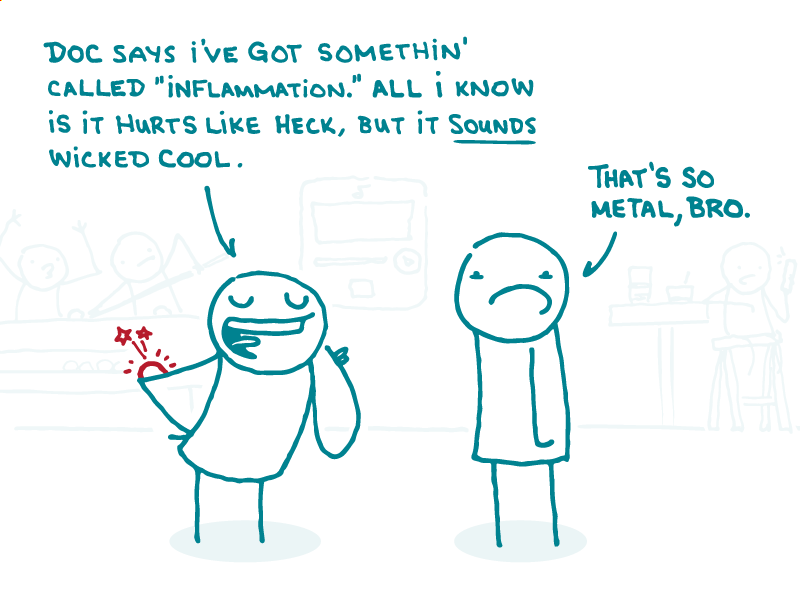
Picture this: you’re drafting an oh-so-health literate health material, slicing through jargon with your razor-sharp plain language skills, when you hit a medical term that leaves you stumped: the dreaded “inflammation.”
At first, you may think it’s an easy fix. In plain language circles, it’s not uncommon to say inflammation = swelling, the end! But not so fast. “Swelling” might work for an inflamed knee or elbow, but what about chronic inflammation that causes sneakier problems?
The truth is, inflammation isn’t the same as its symptoms — it’s a complex process in the body. So unfortunately, you can’t change every “inflammation” to “swelling” and still be medically accurate.
So what’s the solution? As is so often the case, it depends on the context. First, decide if your audience needs to know the word “inflammation” at all.
When people have inflammation from a cut or injury, they may not need to know the underlying cause of their symptoms. So stick to what they can actually feel or see.
Instead of:
- Call your doctor if you see signs of inflammation near the cut.
- Apply ice to reduce inflammation in the knee.
Try:
- Call your doctor if the area near the cut gets red, swollen, or hot.
- Put ice on your knee to help reduce swelling.
But when people have inflammation as part of a chronic disease, they need to know the lingo — and “swelling” won’t cut it. In that case, follow these tips to explain inflammation:
- Start with the system. Inflammation begins with the immune system — so your story should, too. Explain how inflammation can mean that the body is fighting an infection — or, in the case of autoimmune diseases, that the body is fighting… itself.
- Skip cytokines and the like. As a health whiz, you may be comfy discussing all the teensy molecules at work in inflammation. But people with complex health conditions are likely already drowning in scary jargon. So don’t drag their attention down to the molecular level.
- Tailor the symptoms to the situation. In some health conditions, swelling might be the only sign of inflammation. But inflammation can also affect less visible body parts, like the heart — and cause more subtle symptoms, like fatigue. So list specific symptoms for each condition, and ditch the one-size-fits-all approach.
The bottom line: Don’t inflame your readers with unnecessary “inflammation” — and when you need to use the word, explain it in plain language.
Tweet about it: “Inflammation” got you down? @CommunicateHlth has #HealthLit tips to demystify this tricky term: https://bit.ly/39eJlAG
Browse recent posts